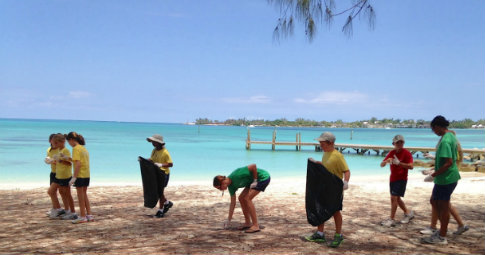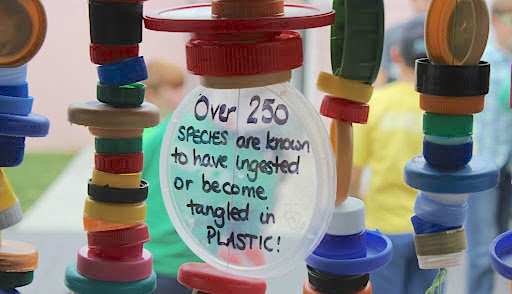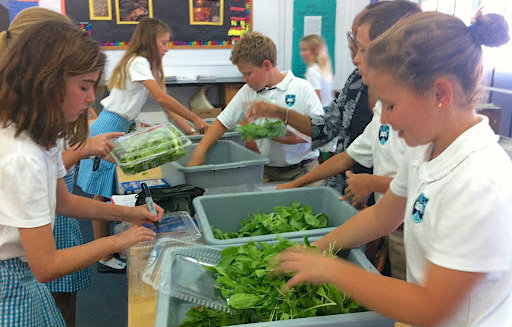Earth Day: Going Green in the Middle Grades
A MiddleWeb Blog
 The best way for our students to become environmentally minded citizens is to get them started at an early age. I am passionate about informing students about human impact on the planet and working with them to take action.
The best way for our students to become environmentally minded citizens is to get them started at an early age. I am passionate about informing students about human impact on the planet and working with them to take action.
Earth Day is on April 22, but I think it’s helpful to plan in advance how you will celebrate and make your school a more eco-friendly place.
I have advised the Eco Club at several schools, and one of the most important steps we’ve taken is to get certified as an Eco School. This demonstrates the school’s commitment to the environment and gives club members a set of seven steps to follow, with the ultimate goal of receiving an Eco School Award.
This well-organized program provides opportunities for leadership, number sense, communication skills, critical thinking, and reflection. After attaining an award, there is an incredible feeling of pride and energy in the community.
Reaching our school’s community
One requirement for achieving the highest level award, the Green Flag, is to involve the community. Here are a few ways that my schools have done this:
- Our club started Carpool/Bike/Walk Day and encouraged as many people as possible to participate. We started with just one day a year, then made it a monthly event the following year. We were able to track our progress and celebrate the grade in our school with the most participants.
- We created a school garden and built planters, divided them up among the grades, and grew vegetables to sell to our community. Eco Club members sold salad greens to parents who were picking up their children after school and teachers ordered weekly herbs and greens from the club.
- We certified our school garden as a Monarch Waystation for butterflies migrating south. The students planted milkweed and followed the steps to ensure that monarch butterflies would find the ideal place to sustain themselves for their journey.
- In schools near an ocean or lake system, Eco Club hosted semi-annual shore clean-ups where we collected trash at various beaches. This could also take place in parks, forests, or other community areas.
Eco Club on campus
In addition to large-scale community projects, the Eco Club took steps around campus to raise environmental awareness:
- We labeled all the wildlife around campus and persuaded the school to plant more native species and remove invasive botanical species.
- The Eco Club ensured that all of the school’s paper supply was 100% recycled and purchased a recycling bin for each classroom.
- We installed timers on the light switches to save electricity.
- The school’s tuck shop (canteen) switched to biodegradable packaging for all takeout food and banned plastic water bottles and straws.
- The Eco Club and the PTA worked together to provide metal water bottles and coffee mugs to teachers at the beginning of the year, eliminating the need for single-use plastic or styrofoam cups.
- Students collected plastic bottle caps and created an art installation with them for Earth Day.
Getting started in your classroom
Does all of this feel like more than you can take on? There are small steps you can take in your own classroom:
- Invite environmental speakers into your classroom, in person or via Skype. My class had a visit from Kristal Ambrose of Bahamas Plastic Movement, who brought a bottle of water from the Great Pacific Garbage Patch.
- The National Wildlife Federation has an extensive Green STEM Guidebook, full of inspiration, information, and lesson plans. Try to adapt one of their ideas to fit your classroom, and then invite other teachers to join you in the future.
- Take your class outside whenever you can. I like to ask students a discussion question and then pair them up to take a brief walk while chatting about their answer. We also read independently and do small group work at the outdoor classroom the Eco Club created.
- Bring plants into your classroom and encourage students to get involved with their care.
What have you tried?
Our combined environmental efforts, both large and small, are what will show our students the importance of caring for our planet. If you have other ideas that our Eco Club can implement, please share them in the comments.





































You always have fantastic advice! Thank you!
Thanks for the material. It will be useful to talk with my students about the environment given the significant situation of my school.